Llama collapsed house, domestic open-source model takes over! The Llama4 performance fraud scandal has occupied the global market, and OpenAI is burning money at a rate far exceeding its profitability; On the other hand, domestic models quickly occupied the international open source model market with their powerful performance and ultra-high cost-effectiveness. It’s time to applaud domestic AI again!
This year, the global AI industry witnessed two “lighthouses” shaking at the same time.
Firstly, the lighthouse of the open source world collapsed with a loud bang.
Meta’s Llama 4 has been exposed for falsifying performance evaluations, a shocking scandal that has cast an indelible shadow on its image as an open-source leader that it has invested heavily in.
Llama 3.1 has become the last glory of Meta’s leading open-source models, and Llama 4’s model ranking is even lower than Llama 3.1.

Latest LMArena Ranking Data
After the scandal broke out, Xiao Zha felt like he was sitting on pins and needles, losing face. He immediately began a series of sweeping reforms and launched a massive poaching campaign, using hundreds of millions of dollars in high salaries to continuously recruit top AI talents from competitors such as OpenAI, attempting to use the money to create the most powerful Llama 5 that could make Meta clear of its previous shame.
Subsequently, the lighthouse in the closed source world also began to shake.
OpenAI’s CFO has publicly sought the US government’s support for its $1.4 trillion computing power plan, causing market panic. US technology stocks evaporated $500 billion overnight, and Wall Street voted with its feet, expressing deep concern about the trillion valuation foam.
A harsh reality is facing the world: the development of global AI is entering a huge ‘vacuum zone’.
Overseas open-source models have been proven to be unreliable, while top-notch closed source models are as expensive as an endless gamble.
The market needs a new force – one that is both powerful in performance, affordable in price, and commercially sustainable.
China’s AI power has rapidly exploded on the international stage, meeting the urgent needs of the world.
These powerful domestic open-source models have even received praise from the foreign AI community: ‘China saved open-source LLMs!’
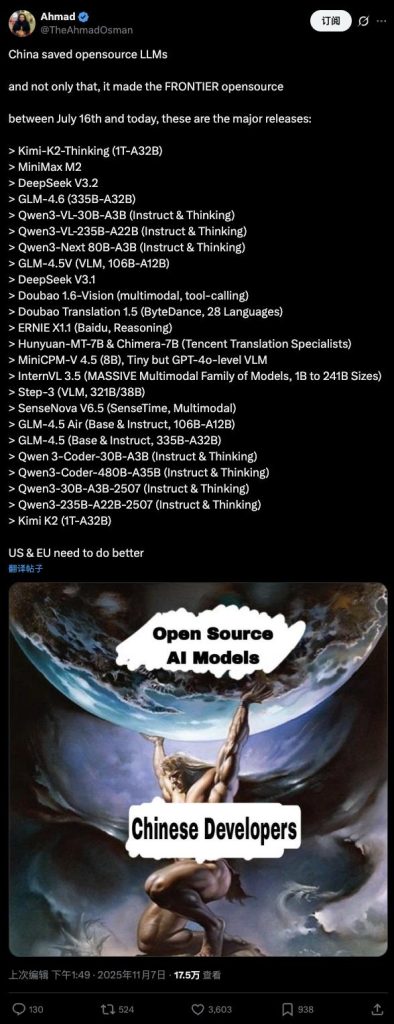
As global developers search disappointedly for the next ‘savior’ on the ruins of Llama 4, they see rising Chinese flags such as DeepSeek, MiniMax, Kimi, and Zhipu.
This is not an accidental catch-up, but a more pragmatic action to fill the global demand vacuum with Chinese efficiency.
Global penetration of Chinese AI
Faced with the global market vacuum, the answer for Chinese AI is not a single dimensional assault, but a comprehensive and multimodal encirclement.
Firstly, DeepSeek’s explosive popularity has shown the world that AI can become an infrastructure like water and electricity.
DeepSeek focuses on the “inference first” text core capability, making it accessible to developers worldwide through extreme open source and extremely low prices. With global distribution channels such as Azure and GitHub, it seamlessly integrates with mainstream enterprise workflows and quickly becomes an indispensable “standard” in the developer community.
DeepSeek’s goal, which was later successfully achieved, was to lower the entry barrier for AI.

DeepSeek research results appear on the cover of Nature
DeepSeek has expanded the breadth of AI applications, while MiniMax’s technological accumulation and commercial layout are equally impressive.
Compared to DeepSeek, Kimi, and Zhipu, MiniMax represents another path – multimodal simultaneous force generation.
In terms of multimodal model development, MiniMax has independently developed speech, video, and music models, and demonstrated relevant results during the technology release weeks in June and October this year.
Its video generation model has been used by overseas creators to create short videos such as “Cat Diving”, which has received over 300 million views on global social platforms, giving rise to AI video creation trends such as “Animal Olympics” featuring animal characters as protagonists.
The performance of M2, released at the end of October, on OpenRouter, the world’s largest model aggregation platform, proves its strength in text modality.
From the perspective of the growth rate of daily usage, it has grown rapidly since its release.
During the free period, the daily usage of Token reached 50B. After opening the Coding Plan payment, the paid daily usage also quickly increased to 50B.
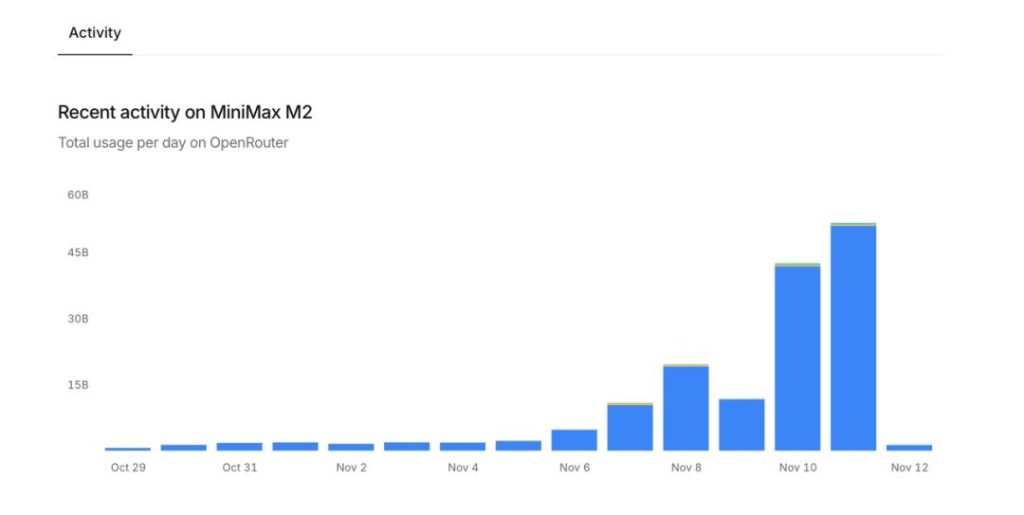
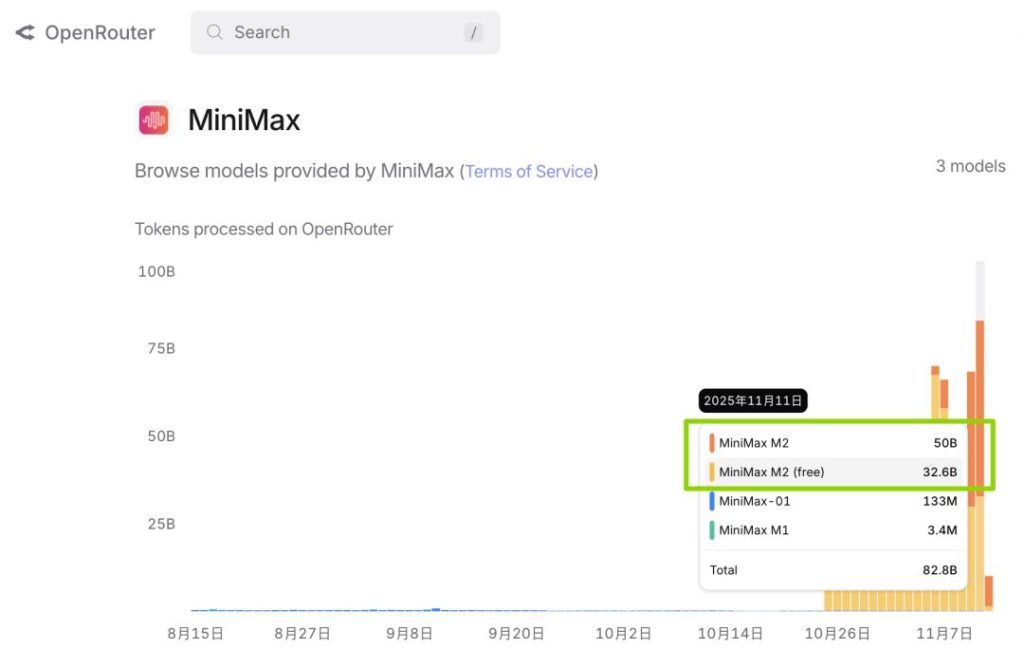
Powerful enough performance combined with ultimate cost-effectiveness.
M2 has lowered its price to below 10% of overseas models of the same level, making it the preferred “engineering knife” in the toolboxes of global enterprises and developers.

Chinese AI, represented by DeepSeek and MiniMax, has formed a powerful synergy.
The former is responsible for lowering the threshold for use to the floor, while the latter further expands the scope of advantages, allowing the Chinese model to rise from a “backup option” to a “must-have option” globally.
Rejecting the ultimate efficiency of ‘burning money’
The prerequisite for becoming a ‘must-have’ requires two solid foundations: ultimate efficiency and a healthy business cycle.
This is the fundamental difference between the Chinese model and the Silicon Valley “burning money” model.
Another difference from DeepSeek’s focus on technology research and development is that MiniMax is not only laying out its technology, but also laying out its products.
Built on highly cost-effective technology, the product can further amplify this advantage.
Spending small money to accomplish big things “is synonymous with the efficiency of AI in China.
In an environment where computing power is objectively limited, Chinese engineers have unleashed astonishing potential for algorithm innovation.
DeepSeek is renowned for its low cost and high performance, and its research results have been featured on the cover of Nature, winning international authoritative recognition for the “low-cost legend” of open source models in China.
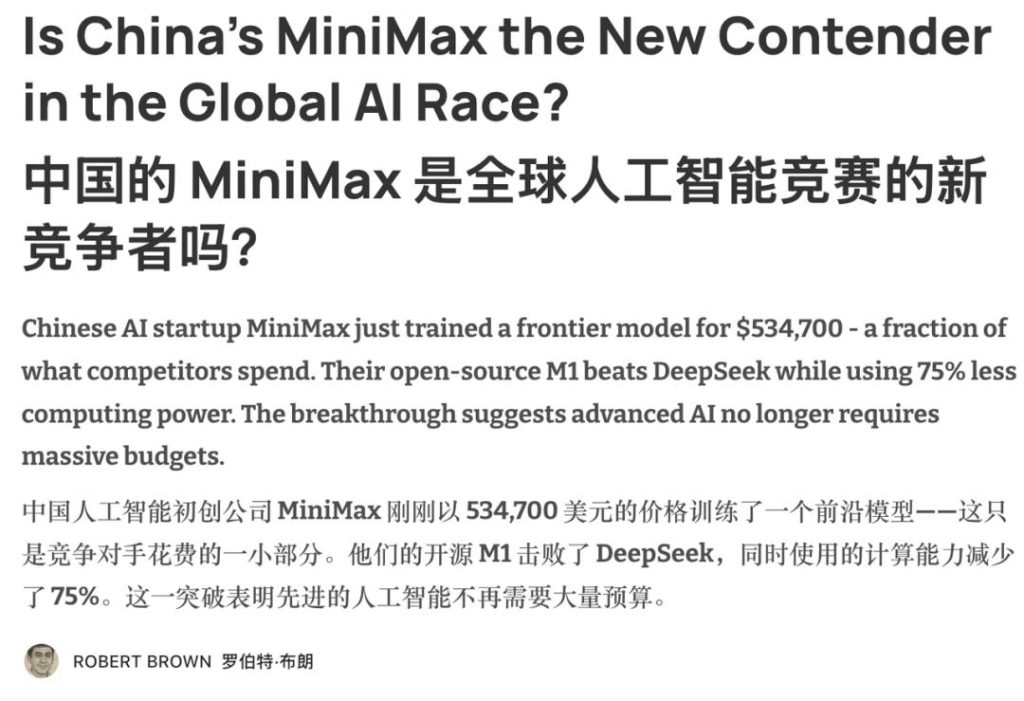
The efficiency of MiniMax is equally incredible: the MiniMax M1 model released in June only trained with 512 H800 blocks for three weeks during the reinforcement learning phase, with a rental cost of only $540000, which is less than 1% of the training cost of similar OpenAI models.
This extreme cost control directly translates into a price advantage; Reflected on the industry side is the ‘unit cost of intelligence’.
The MiniMax M2 has only 230B total parameters and 10B activation, using only one-third of the parameters of overseas models, achieving better intelligent effects and higher cost-effectiveness. It is available in the most complex programming scenarios and easy to use.
When the price of M2 is only 8% of Claude Sonnet 4.5, which has similar performance, this ultimate cost-effectiveness itself is the most powerful “weapon” capable of disrupting the global market landscape.
Overseas technology media ‘The Information’ reports
Being able to stay on the table for a long time also requires a healthy ability to self generate blood.

In this regard, Chinese AI has taken a clearer path.
DeepSeek has implemented an infrastructure roadmap from technology to community and enterprise deployment services, providing APIs to global enterprises through a free and low-priced open source model to help commercialize projects.
MiniMax has built a closed loop of “model product revenue” on both the B-end and C-end.
The multiple models independently developed by MiniMax have achieved global leadership and can directly serve users in a productized form. Through To C applications such as Talkie, Conch AI, MiniMax Agent, etc., the model capabilities are efficiently converted into cash flow, which then feeds back into larger scale model training.
OpenAI, like MiniMax, also adopts a “model+product” approach in its business model, but heavily relies on external massive blood transfusions in model iteration. Sustainability needs to be questioned, and whether it can self infuse is the next decisive point for AI companies.
AI itself is not a foam, but AI cannot create gods
The tide of science and technology will eventually wash away the foam and leave real value.
When Silicon Valley giants who believe in Scaling Law encounter the reality of trillion dollar capital expenditures, the world begins to rethink a better path to AGI.
The underestimated Chinese AI has provided a new answer with “ultimate efficiency” and “business closed loop”: the road to the future is not just a single wooden bridge that burns money, but also a carefully planned and steady path.
Just as Google once defined the golden age of software engineering with open source, today’s Chinese forces are defining a new era of AI applications in a more pragmatic and inclusive way, with a “hundredfold ROI” of overseas AI companies.
China has now become the backbone of the AI ecosystem. Please do not set double standards, put aside arrogance and prejudice, and give the same warm applause to the intelligent and hardworking Chinese algorithm engineers, to the ordinary people who tirelessly strive for China’s rise and global prosperity, and to you who maintain attention and tolerance towards AI.



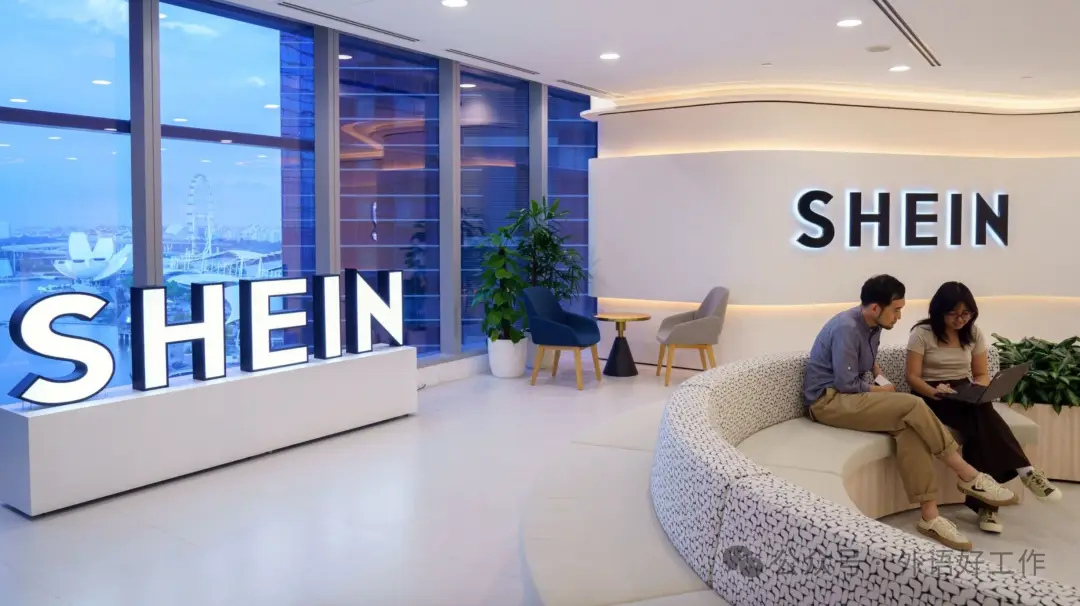





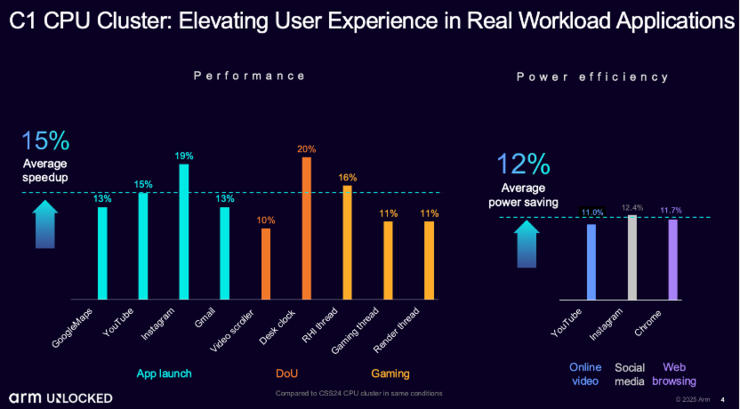


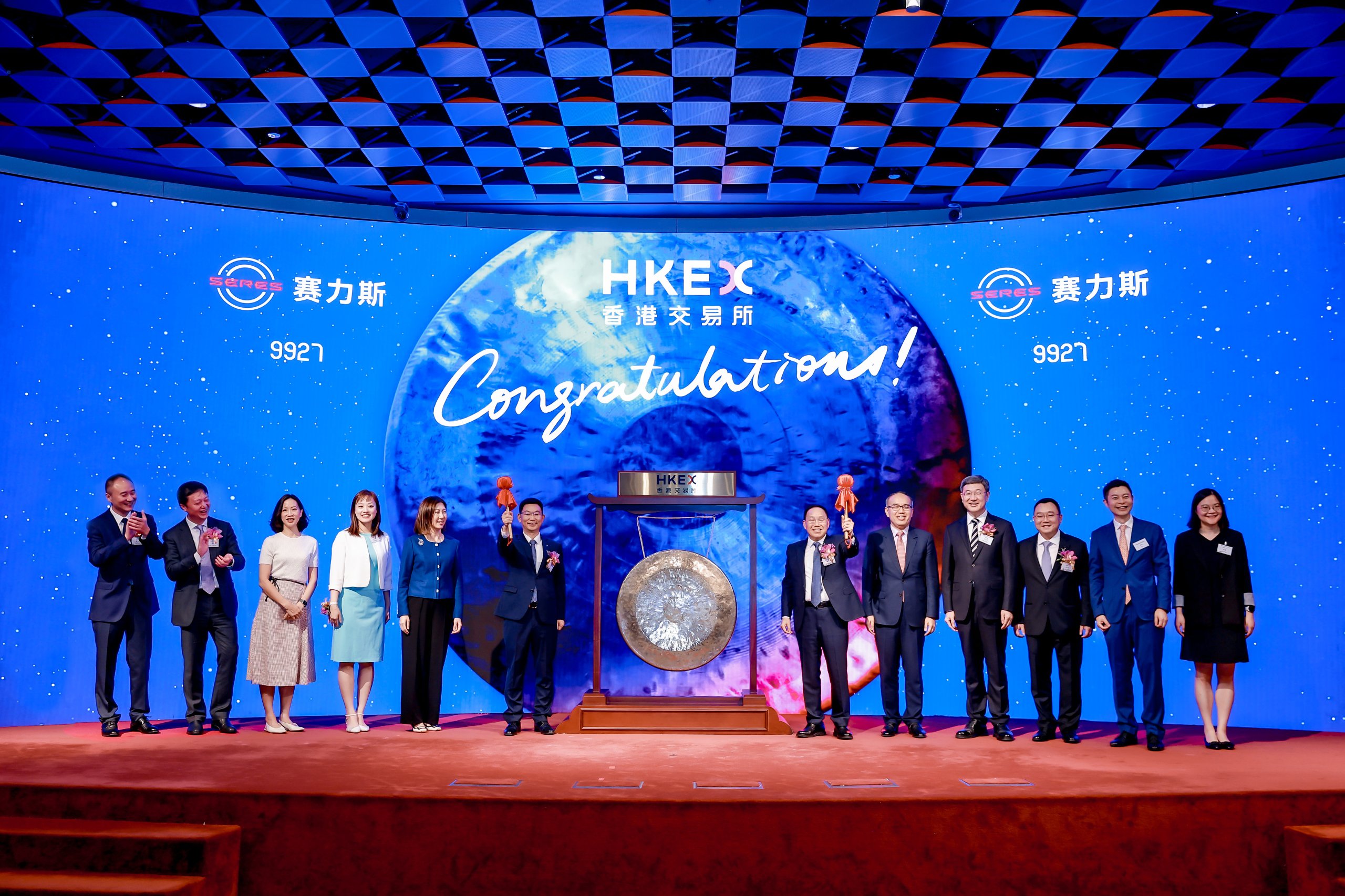


暂无评论内容